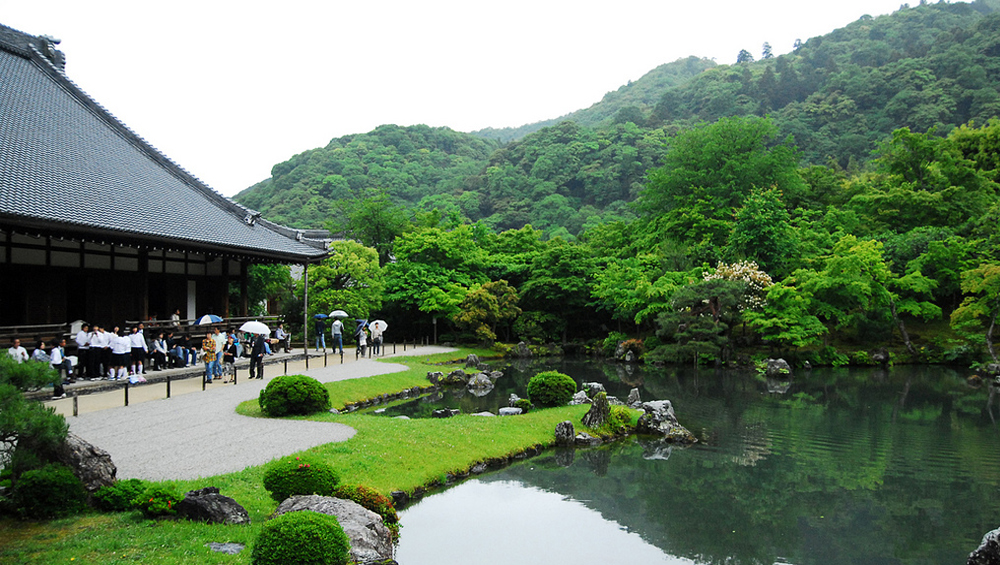Location: Arashiyama, Tokyo
Garden Architect: Musō Soseki,
Built: 1339
Culture: Kamakura and Muromachi periods(1185–1573)

The Tenryū temple, pictured on the left, was initially constructed to venerate Gautama Buddha and the first priest Musō Soseki incorporated the garden into the design of the landscape. Since 1339, the temple and garden have seen destruction brought by natural disasters and multiple wars. Nonetheless, the Garden retains multiple aspects of traditional Japanese gardens like borrowed scenery but also has unique elements from its time like the Zen rock garden. Borrowed scenery just refers to the landscape beyond the temple’s ground such as the mountains and large vegetation. This is very similar to “Summer Mountains” Qu Ding, where the larger environment enhances the elements posed in the foreground. The zen rock garden is one that took shape during the Kamakura and Muromachi periods(1185–1573), where monks brought a new form of Buddhism, called Zen, and took a physical appearance in the rock gardens. The lines that go along the sand are meant to depict the motion of the water, along with visually connecting the earth and water. As mentioned before, the function of the space has changed over time and in the early 21st century it has become a space of “UNESCO World Heritage Site”. People from all over Japan, Asia, and the world come to see a natural beauty that the Sōgenchi Garden and Tenryu Ji temple are!
Sources:
1 thought on “Sōgenchi Garden of Tenryu Ji”